Unleashing the Power of Grounding: The Incredible Health Benefits of Walking Barefoot on Earth
1. Grounding also known as Earthing, is a practice that involves connecting the physical body to the earth’s electrical energy. The concept is based on the idea that the earth has a negative electric charge and that by making direct contact with the ground, there can be a transfer of free electrons from the earth to the human body.
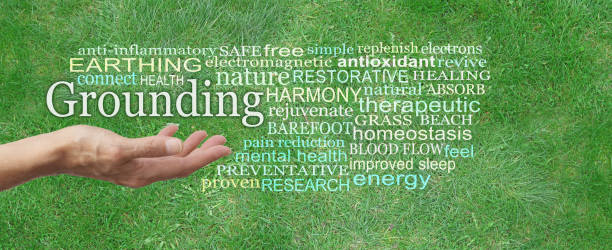
2 . Meaning
Grounding or earthing extends beyond just standing or walking barefoot. It encompasses a variety of practices that connect you with the earth and the present moment, which can enhance the benefits you experience. Here’s a summary of how you can maximize the concept of grounding:
3 . Diverse Grounding Practices
- Physical contact with the earth: This includes walking barefoot, lying on the ground, or submerging in natural bodies of water.
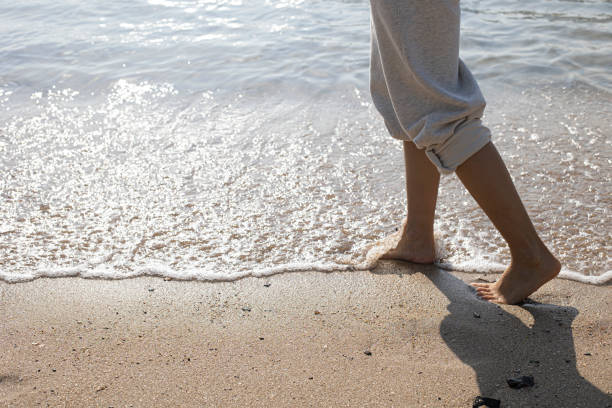
Woman walking on a tropical beach. - Mindfulness and meditation: Practices that focus on the present moment and bodily sensations can also have a grounding effect.
- Sensory engagement: Using your senses to connect with your environment, such as through touch, smell, or taste, can help ground you.
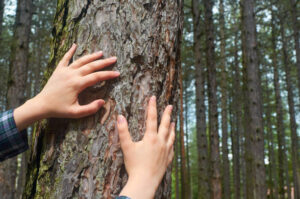
Female hands on a tree trunk as a symbolic sign that it should be cherished - Natural materials: Interacting with elements like wood, stone, or plants can serve as a form of grounding.
4 . Integrating Grounding into Daily Life
- Routine activities: Incorporate grounding into regular activities, such as gardening, which involves direct contact with the soil.
- Work environment: Use grounding mats or choose footwear that allows for the transfer of the earth’s electrons.
- Leisure time: Spend time in nature, such as parks or beaches, where you can connect with the earth.

5 . Holistic Approach
- Physical health: Grounding can complement physical exercise and contribute to overall wellness.
- Mental health: It can be used as a tool to manage stress, anxiety, and other mental health challenges.

Mental Health - Emotional well-being: Grounding can help you maintain emotional balance and resilience.
6 . Merits and Ways
The merits of grounding include potential pain reduction, changes in immune response, wound healing, effects on inflammation, and possible prevention and treatment of chronic inflammatory conditions. Grounding can be achieved through simple techniques such as:
- Walking barefoot outdoors on natural surfaces like dirt, grass, or sand
- Pressing bare hands into the earth
- Using grounding tools like mats, bands, sheets, patches, or footwear connected to the earth via a cord.
7 . Psychological, Mental, and Physical Health Benefits
Grounding may offer several health benefits, including:
- Reduced pain and inflammation: Grounding may decrease chronic pain and inflammation, potentially aiding in the treatment of conditions like arthritis.
- Improved sleep and energy levels: Some people report better sleep quality and increased energy after practicing grounding.
- Stress reduction: Grounding exercises might help reduce stress and anxiety levels.
- Cardiovascular health: There is some evidence to suggest grounding can improve blood pressure and blood flow.
- Normalization of biological rhythms: Grounding might help in normalizing the body’s circadian rhythms, leading to improved sleep patterns and overall well-being.
8 . Grounding Techniques:
Grounding techniques are strategies that can help you manage intense emotions or thoughts and bring your focus back to the present moment. Here are some grounding techniques that you might find helpful:
a . Physical Techniques
- Put your hands in water: Notice the temperature and how it feels on different parts of your hands.

- Touch items near you: Pay attention to their texture, weight, and temperature.
- Breathe deeply: Focus on the sensation of air filling your lungs and then slowly exhaling.
- Savor a food or drink: Take small bites or sips and fully experience the taste and smell.
- Take a short walk: Concentrate on the rhythm of your footsteps and the sensation of movement.
- Hold a piece of ice: Feel the cold and the changes as it begins to melt.

- Savor a scent: Inhale the aroma of tea, spices, or a scented candle, and try to identify its qualities.
- Move your body: Perform exercises or stretches and pay attention to how your body feels with each movement.
b . Mental Techniques
- Mindfulness meditation: Focus on your breath or the sensations in your body.
- Visualization: Imagine a peaceful place and explore it with all your senses.
- Counting: Count backward from 100 or count various items around you.
- Recite something: Repeat a poem, song, or a list of names.
c . Soothing Techniques
- Listen to music: Choose music that you find calming and focus on the different sounds.

Listen to music - Practice self-kindness: Speak gently to yourself, affirming your worth and well-being.
- Engage in a hobby: Do something you enjoy, like drawing, knitting, or gardening.
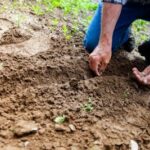
These techniques can be used in various situations to help create space for distressing feelings and improve your overall well-being. It’s always a good idea to try different techniques to see which ones work best for you.
During a panic attack, grounding techniques can be particularly effective in helping you manage overwhelming emotions and regain a sense of control. Here are some methods you can use:
d . The 5-4-3-2-1 Method
This technique helps you focus on the present by engaging your senses:
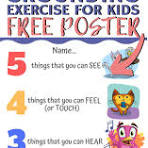
- Identify five things you can see: Look around and notice five items you hadn’t noticed before.
- Acknowledge four things you can touch: Feel the texture of your clothing, the smoothness of a surface, or the grass under your feet.
- Name three things you can hear: Pay attention to the sounds in your environment, whether it’s the ticking of a clock, distant traffic, or birds chirping.
- Recognize two things you can smell: If you can’t immediately smell anything, walk to a place where you can smell food, flowers, or anything else.
- Identify one thing you can taste: Take a sip of water, chew gum, or notice the current taste in your mouth.
e . Controlled Breathing
Controlled breathing can help reduce the physiological symptoms of a panic attack:
- Deep breathing: Inhale slowly through your nose, hold for a few seconds, and exhale slowly through your mouth.
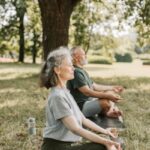
5-5-5 breathing - 5-5-5 breathing: Breathe in for 5 seconds, hold for 5 seconds, and exhale for 5 seconds.
f . Physical Movement
Engaging in physical movement can help release the built-up energy from a panic attack:
- Stretching: Perform gentle stretches to release muscle tension.

Stretching - Walking: If possible, take a walk, focusing on each step and the rhythm of your movement.
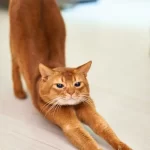
j . Soothing Activities
Soothing activities can help distract your mind from panic symptoms:
- Listen to calming music: Choose a song that relaxes you and focus on the lyrics or melody.
- Visualize a safe place: Imagine a place where you feel safe and calm. Explore this place in your mind, engaging all your senses.
Remember, these techniques are meant to help you during a panic attack by bringing your attention back to the present and away from the distressing thoughts and sensations. It’s always a good idea to practice these techniques when you’re calm so that they become more effective during a panic attack
9 . Grounding techniques for Anxiety: can be a valuable tool for individuals with anxiety disorders. These techniques help by diverting attention from anxious thoughts and focusing on the present moment, which can calm the nervous system and reduce feelings of stress and anxiety. Here’s how grounding techniques can assist:
a . Redirecting Focus
b . Calming the Nervous System
c . Enhancing Mindfulness
d . Increasing Sense of Control
e . Preventing Escalation
f . Versatility and Accessibility
10 . Mental vs. Physical Techniques

Mental grounding exercises redirect thoughts away from anxiety, while physical grounding exercises use the body and senses to connect with the present moment. Both types can be effective for managing symptoms of anxiety disorders.
It’s important to note that while earthing techniques can be helpful, they are most effective when used as part of a comprehensive treatment plan for anxiety, which may include therapy, medication, and lifestyle changes. Consulting with a mental health professional can guide the best grounding techniques and other strategies for managing anxiety disorders.
Incorporating it into your daily routine can be a simple and effective way to enhance your well-being. Here are some practical tips to help you integrate the practices into your everyday life:
a . Morning Routine
- Start your day with earthing: Spend a few minutes each morning standing barefoot on the earth, whether it’s grass, soil, or sand. If you’re unable to go outside, consider using a grounding mat or wristband.
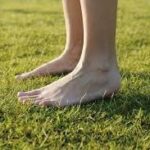
Grounding
b. Work or Study Breaks
c . Physical Activities
- Incorporate balance exercises: Try one-legged stands or yoga poses that require balance to help you focus and ground yourself.

balance exercises - Engage in mindful walking: If possible, walk barefoot in a safe and clean area, focusing on the sensation of the ground beneath your feet.
d . Mindfulness Practices
- Mindful eating: Take the time to savor your meals, paying attention to the taste, texture, and aroma of your food.
- Breathing exercises: Practice deep breathing techniques, especially when you feel stressed or overwhelmed.
e . Evening Routine
- Unwind with grounding: Before bed, spend some time earthing to help calm your mind and prepare for sleep. This could involve lying down with a grounding sheet or simply reflecting on the sensations of your body.

walking barefoot on the ground
f. Throughout the Day
- Touch natural materials: Keep a stone, crystal, or plant near your workspace that you can touch periodically to help ground you.

Trekker embracing a tree in a forest - Sensory awareness: Regularly pause to observe your surroundings using your senses, which can help bring you back to the present moment.
Remember, the key to successfully incorporating grounding into your daily routine is consistency. Choose practices that resonate with you and make them a regular part of your day. Over time, these grounding habits can become second nature, providing you with a stable foundation of calm and clarity throughout your day.
11 . Grounding or earthing extends beyond just standing or walking barefoot. It encompasses a variety of practices that connect you with the earth and the present moment, which can enhance the benefits you experience.
a . Diverse Earthing Practices
- Physical contact with the earth: This includes walking barefoot, lying on the ground, or submerging in natural bodies of water.

- Mindfulness and meditation: Practices that focus on the present moment and bodily sensations can also have a grounding effect.
- Sensory engagement: Using your senses to connect with your environment, such as through touch, smell, or taste, can help ground you.
- Natural materials: Interacting with elements like wood, stone, or plants can serve as a form of grounding.
b . Integrating Grounding into Daily Life
- Routine activities: Incorporate earthing into regular activities, such as gardening, which involves direct contact with the soil.
- Work environment: Use grounding mats or choose footwear that allows for the transfer of the earth’s electrons.
- Leisure time: Spend time in nature, such as parks or beaches, where you can connect with the earth.
c . Holistic Approach
- Physical health: Grounding can complement physical exercise and contribute to overall wellness.
- Mental health: It can be used as a tool to manage stress, anxiety, and other mental health challenges.
- Emotional well-being: Grounding can help you maintain emotional balance and resilience.
By incorporating a range of grounding practices into your lifestyle, you can enhance your connection to the earth and reap the full spectrum of benefits. It’s about finding what works best for you and making it a part of your daily routine for a more balanced and centered life.
Source:
https://truandwell.com/health-and-wellness/feel-more-grounded/
https://everybodyground.com/grounding-equipment-daily-routine/
https://www.betterhelp.com/advice/anxiety/22-best-grounding-techniques-for-anxiety/
https://lifelonglabs.com/2024/02/29/how-to-practice-grounding-every-day/
If you enjoyed this article, please like and share it with your friends, and don’t forget to subscribe for more great content!


